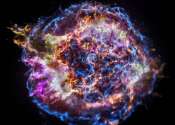Unexpected data from the Large Hadron Collider suggest the collisions may be producing a new type of matter
Collisions between protons and lead ions at the Large Hadron Collider (LHC) have produced surprising behavior in some of the particles created by the collisions. The new observation suggests the collisions may have produced ...









